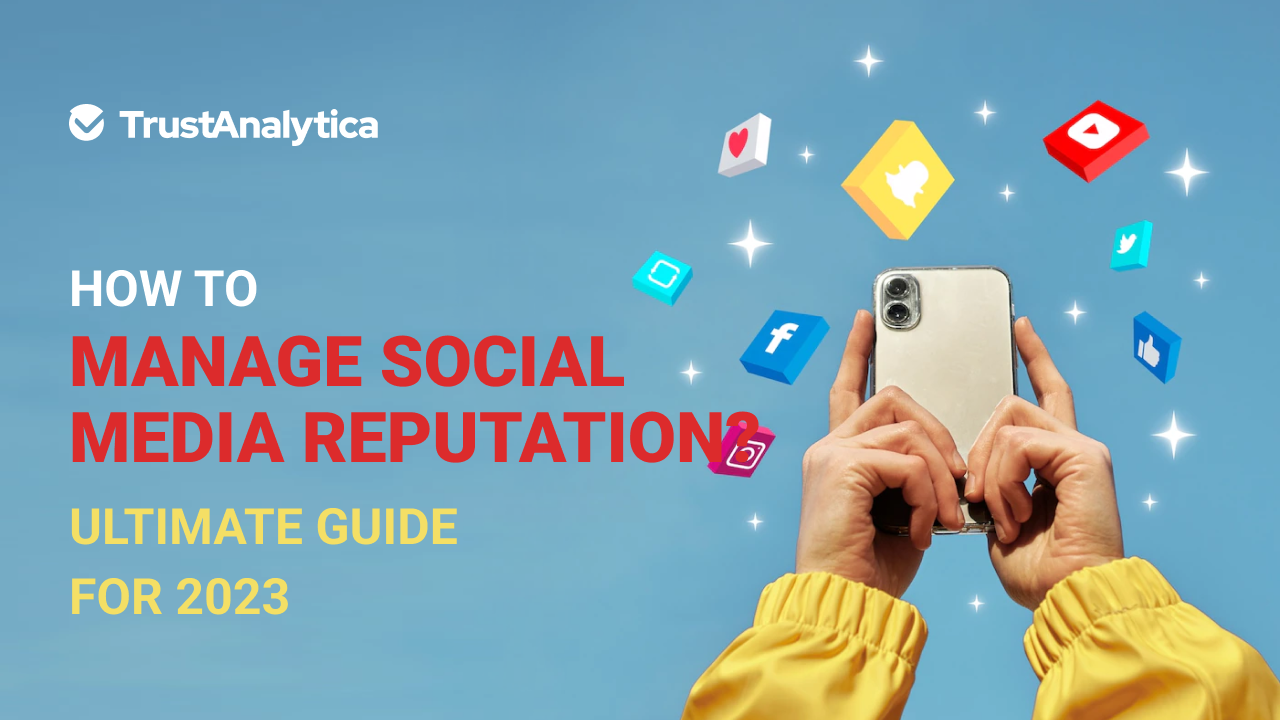Brand reputation management is an ongoing process. In the earlier days, it was only about setting up a website and social media accounts and then posting on the latter to let the customers and prospects know that you still exist. Now, things have taken a turn that marketers did not anticipate. Changing consumer behaviors and […]

Brand reputation management is an ongoing process. In the earlier days, it was only about setting up a website and social media accounts and then posting on the latter to let the customers and prospects know that you still exist. Now, things have taken a turn that marketers did not anticipate.
Changing consumer behaviors and mounting competition have compelled brands to be always on their toes. Third-party sites based on community guidelines and principles have a bigger role in directing and forcing the narrative.
This is just the beginning of 2023 and we are seeing changes in economic and social spheres. They have also been manifested in social media reputation management.
In this blog, we will cover what is at stake, customer reviews and their effects, and how you can manage a brand this year.
Social media is a force to reckon with in the modern world. It used to take sheer force and manpower to turn people’s minds and preferences which are not achieved by a single tweet! Brands are always at the top of their game to ensure that they are not left out of the online chatter. This is something that is keeping the internet world alive.
But, there is a difference between the part of the chatter and being at the tail-end of it. The brands that drive the narrative and connect with customers and prospects get major gains in the game. According to credible sources, at least 50% of modern consumers are interested in following the social media accounts of brands to learn more about the products and services.
That’s why brands are pursuing avenues in all the relevant directions including Facebook, Twitter, Instagram, and more.
As mentioned in the earlier sections, the brand’s online reputation management including the social media circles was easier to handle. It all boiled down to creating accounts and then posting periodical content. Now, the stiff competition alone can put the brands out of business.
Social media reputation is about monitoring, assessing, and interfering with the traffic generated with the brand’s name at the center. This can be the chatter about new products, services, announcements, and even controversies.
Professionals entrusted with social media reputation management of brands have their work cut out for them.
When we say third-party, we talk about the forums and platforms that have become extremely popular in the past. They carry customer support and traffic and churn out big numbers in terms of visits, closed deals, and so on.
The process of ordering something online now goes like this. A user comes to the search online and uses keywords to find a product. Along with the product, the sellers also come to light as they are an important part of the equation. Apart from owned content, other sites like Trustpilot, Yelp, Facebook Reviews, and more pop up with necessary information.
In this world of reviews and testimonials, consumer decisions rely on them. In this way, we can say that they are more effective than sales copy and other owned content.
In the past, people relied on word-of-mouth to decide on getting information about something. Since physical connections between far-off people are getting less and less frequent, consumer reviews and trusted sites make up for digital word-of-mouth.
The most common types of digital word of the mouth include star ratings and testimonials. The former comes to the fore when a platform asks users to rate a product, service, or even the overall brand. Out of 5, the person can rate the subject which will be visible to other users.
In the case of testimonials, they are either descriptive or segregated into different sections to help people better understand the whole experience. For instance, an online food eatery feedback form could ask you to rate delivery, food quality, order ease, and so on based on star ratings. Then, you may get to add descriptions and photos, if you like.
Many online reputation management gurus and sites come up with sheer plans and practices. Some even claim to help you get up and go in a matter of hours. This is simply not true. We have already gone through the drill – social media reputation management is a dynamic, ongoing process. Things change, for better or for worse, in a matter of seconds and brands need to be on their toes. For review management, TrustAnalytica is a leading service provider with an exceptional range of products.
In this section, let us devise a 5-step plan to help your brand succeed in 2023!
Run Audits To Determine The Current Position
Before making any big changes, it is necessary to set the initial position. This will help you in determining whether you need to take things up a notch or keep them stable and move horizontally. Many professionals make the mistake of setting goals and ambitions based on an arbitrary starting position. This can prove fatal to the overall plan.
To do this, you need to check the following areas:
Track Brand Mentions Across Platforms
Brand mentions meaning the traffic and chatter around a brand in the virtual world. It can be positive for a brand and the opposite. Professionals entrusted with the brand’s social media reputation need to track brand mentions across platforms, including both owned channels and other user-based areas.
To do that, they can use specialized software and tools, such as TrustAnalytica to get real-time notifications regarding online chatter. The phrases and areas that they can cover include tags, mentions, hashtags, branded keywords, and so on. With solid tracking and intervention criteria in place, brands can ensure that they are right on top of the developments.
Be Forthcoming To Connect With Users
Online isolation is not the right course for brands. Many brands take the course of mystery, which has some attraction, but it hinders them to become mainstream and reach the zenith of their survival.
That’s why businesses operating in the social media sphere need to connect with users and even find ways to ensure that they are the ones to initiate a conversation.
Following are some of the ways brands can connect with users:
Drive The Brand Narrative
For brands that are big with huge followings on social media, it is almost impossible to stay out of online conversations. People that are interested and invested in the brand exchange ideas about the products and services without missing a beat.
Take Coca-Cola, for instance, it is truly a global brand with a large consumer base in almost every continent. However, the brand must be at the helm of the narrative to ensure that people know the truth about the brand on all issues. Controversies do not take long to develop and disperse in the virtual world. This is a fact that many brands have learned the hard way.
Always Take Actions Based On Customer Feedback
Customer feedback can be a blessing or a curse, depending on how a brand looks at it. Those businesses that value the consumers’ input end up at the top of the food chain. When we take a look at consumer feedback, it can double as both a marketing tool as well quality assurance engine.
Apart from the obvious reasons, many brands are gearing up their feedback collection, processing, and storage facilities to ensure that consumers drive their brands forward.
Social media reputation management is an active process with many hurdles to cover in the virtual world. The changing dynamics of consumer behavior and mounting competition is catching up with the brands. This is true from the fact that more than 90% of modern consumers and online prospects look for customer reviews and testimonials before making their first purchase.
In this post, we have covered the need and effects of solid social media reputation management in 2023. We have also shared a five-step social media reputation management plan so that brands can set and touch new limits.
Social reputation management is a voluntary process of monitoring, managing, and interfering with the online traffic directed toward or originating from the brand. Depending on the reach and scope, brands can set both front-end and back-end covers to achieve this end.
Social media is a juggernaut with many ideas and issues that brands face each day. If you are looking for a reliable guide to ace the brand reputation management of your brand, follow these steps:
To solve a problem related to a brand’s online reputation management, follow the path:
There are three major types of tactics and tools that brands employ to master social media reputation management:
Following are some of the key elements of social media reputation management:
 Why Online Customer Reviews Are the Ultimate Salesperson for eCommerce
Why Online Customer Reviews Are the Ultimate Salesperson for eCommerce 
